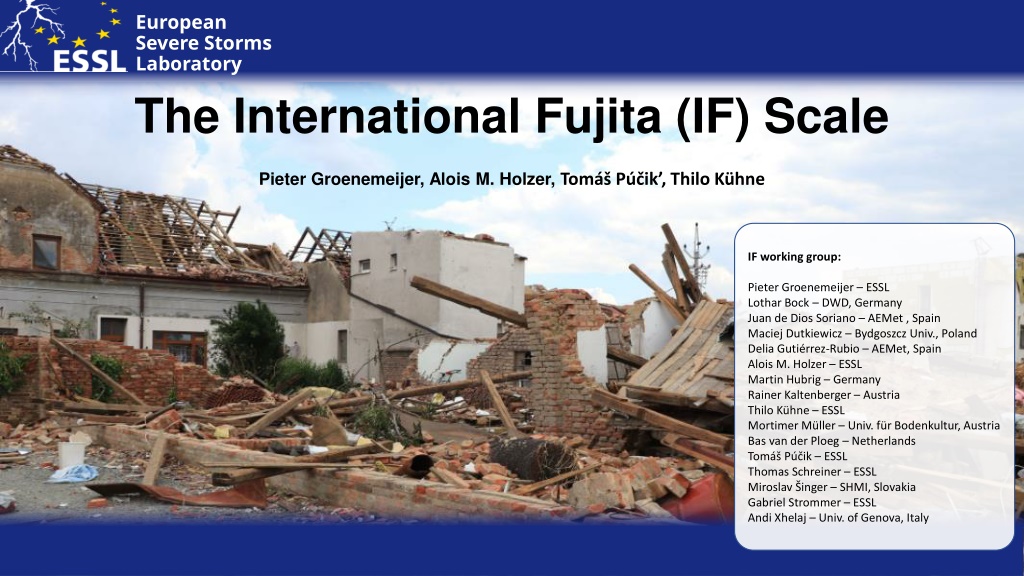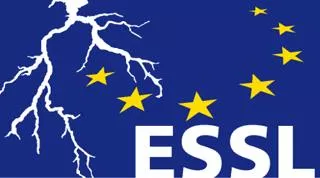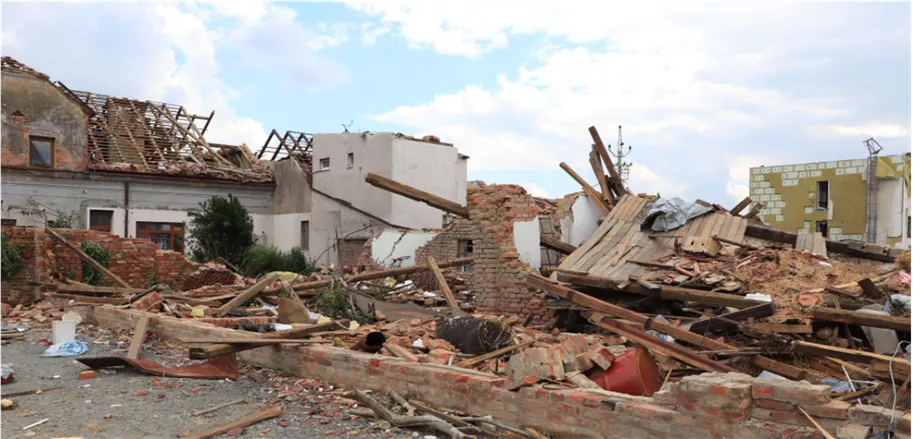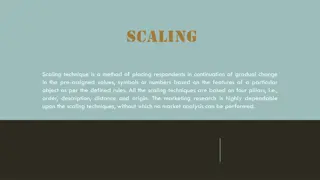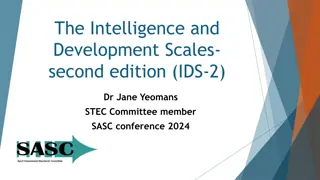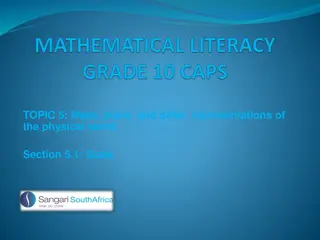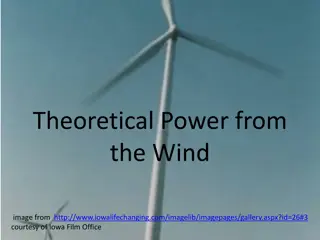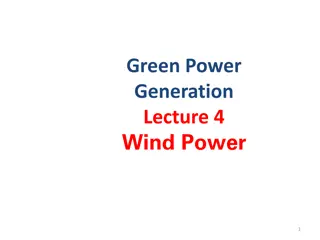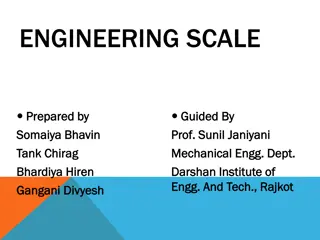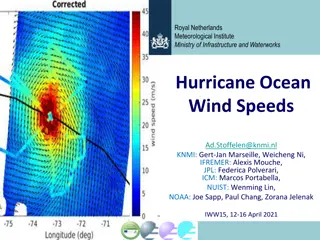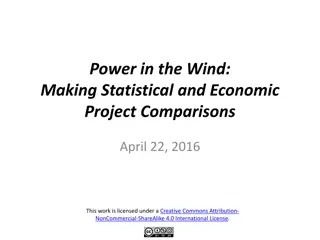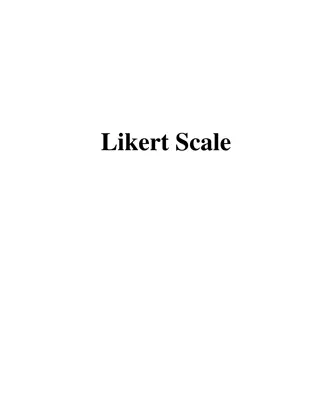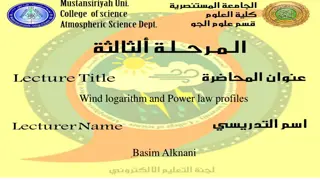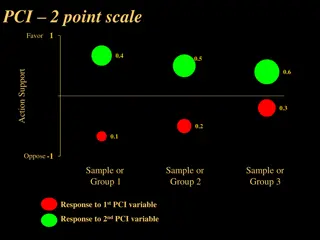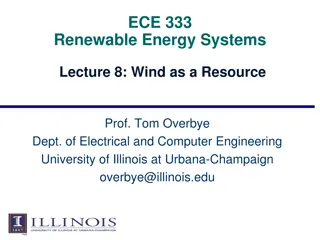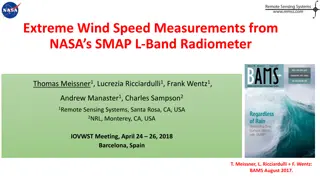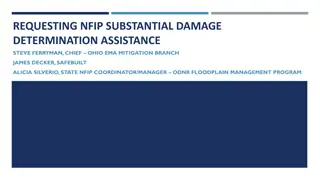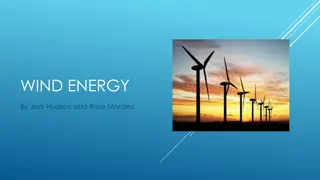Challenges in Wind Damage Assessment Scales
The European Severe Storms Laboratory and the International Fujita Scale have been pivotal in evaluating wind damage from tornado events. However, issues such as vague damage descriptions, lack of scientific backing for wind-damage relationships, and applicability to different regions have posed challenges. Efforts have been made by experts to refine these assessments, introduce new damage indicators, and improve the connection between wind speeds and damage severity.
Download Presentation

Please find below an Image/Link to download the presentation.
The content on the website is provided AS IS for your information and personal use only. It may not be sold, licensed, or shared on other websites without obtaining consent from the author.If you encounter any issues during the download, it is possible that the publisher has removed the file from their server.
You are allowed to download the files provided on this website for personal or commercial use, subject to the condition that they are used lawfully. All files are the property of their respective owners.
The content on the website is provided AS IS for your information and personal use only. It may not be sold, licensed, or shared on other websites without obtaining consent from the author.
E N D
Presentation Transcript
European Severe Storms Laboratory The International Fujita (IF) Scale Pieter Groenemeijer, Alois M. Holzer, Tom P ik , Thilo K hne IF working group: Pieter Groenemeijer ESSL Lothar Bock DWD, Germany Juan de Dios Soriano AEMet , Spain Maciej Dutkiewicz Bydgoszcz Univ., Poland Delia Guti rrez-Rubio AEMet, Spain Alois M. Holzer ESSL Martin Hubrig Germany Rainer Kaltenberger Austria Thilo K hne ESSL Mortimer M ller Univ. f r Bodenkultur, Austria Bas van der Ploeg Netherlands Tom P ik ESSL Thomas Schreiner ESSL Miroslav inger SHMI, Slovakia Gabriel Strommer ESSL Andi Xhelaj Univ. of Genova, Italy
Why? The goal of a wind damage scale: compare tornado* events by estimating the wind speed responsible for the damage Until now, the European Severe Weather Database has used the Fujita scale for rating tornado and wind damage F(x) = 6.30 (x + 2)1.5m/s The Fujita scale expresses wind speeds with a formula:
Why? Two problems: 1. damage descriptions are too general 2. wind speed / damage relation not backed up by science F(x) = 6.30 (x + 2)1.5m/s
Why? Two problems: 1. damage descriptions are too general 2. wind speed / damage relation not backed up by science Fujita in 1992 suggested to distinguish damage to weaker from stronger houses
Why? Two problems: 1. damage descriptions are too general 2. wind speed / damage relation not backed up by science ESSL developed a similar approach in 2012
Why? Two problems: Introduced an extensive list of damage indicators 1. damage descriptions are too general Used the expert opinion s of engineers and meteorologists to connect wind speeds to various degrees of damage 2. wind speed / damage relation not backed up by science The EF-scale (2007) tried to address this problem as well New wind speeds imply that the old speeds were far off
Why? New problems: damage indicators were not applicable to other places in the world Introduced an extensive list of damage indicators Used the expert opinion s of engineers and meteorologists to connect wind speeds to various degrees of damage New wind speeds imply that the old speeds were far off
Why? New problems: damage indicators were not applicable to other places in the world Introduced an extensive list of damage indicators Damage indicator: elementary school Used the expert opinion s of engineers and meteorologists to connect wind speeds to various degrees of damage New wind speeds imply that the old speeds were far off
Why? New problems: damage indicators were not applicable to other places in the world Introduced an extensive list of damage indicators Damage indicator: elementary school Used the expert opinion s of engineers and meteorologists to connect wind speeds to various degrees of damage New wind speeds imply that the old speeds were far off
Why? New problems: damage indicators were not applicable to other places in the world Introduced an extensive list of damage indicators Damage indicator: elementary school Used the expert opinion s of engineers and meteorologists to connect wind speeds to various degrees of damage New wind speeds imply that the old speeds were far off
Why? New problems: damage indicators were not applicable to other places in the world Introduced an extensive list of damage indicators Damage indicator: elementary school Used the expert opinion s of engineers and meteorologists to connect wind speeds to various degrees of damage New wind speeds imply that the old speeds were far off
Why? New problems: damage indicators were not applicable to other places in the world more damage indicators were needed Development of regional variants of the EF-scale in Japan, Canada, and France
Why? Revisions imply massive past estimation errors, both lower and upper-end of the scale New problems: damage indicators were not applicable to other places in the world ESSL does not think low-end events wind speeds were underestimated, so why would we need to correct something? more damage indicators were needed changed wind speeds?
Why? Revisions imply massive past estimation errors, both lower and upper-end of the scale New problems: damage indicators were not applicable to other places in the world Doppler radar and photogrammetric analyses show winds well into F5. So were the upper-end corrections warranted? more damage indicators were needed changed wind speeds?
Why? Revisions imply massive past estimation errors, both lower and upper-end of the scale New problems: damage indicators were not applicable to other places in the world Doppler radar and photogrammetric analyses show winds well into F5. So were the upper-end corrections warranted? more damage indicators were needed Fastest Doppler wind (Wurman et al, 2021): changed wind speeds? 118 m/s 144 m/s Still from video by Reed Timmer on Youtube&Twitter of the 2022 Andover, KS tornado. (EF-3)
Why? Revisions imply massive estimation errors were made in the past The answer is: We don t know, because these scales use a 3-second averaged horizontal wind speed* at 10 m AGL, but this speed is (almost) never measured in a tornado Doppler radar and photogrammetric analyses show winds well into F5. So were the upper-end corrections warranted? Fastest Doppler wind (Wurman et al, 2021): 118 m/s 144 m/s
Why? In the literature we do find: occasional mobile Doppler radar measurements rarely, photogrammetric analyses from videos The answer is: We don t know, because these scales use a 3-second averaged horizontal wind speed* at 10 m AGL, but this speed is (almost) never measured in a tornado Fastest Doppler wind (Wurman et al, 2021): 118 m/s 144 m/s
Why? In the literature we do find: occasional mobile Doppler radar measurements rarely, photogrammetric analyses from videos The answer is: We don t know, because these scales use a 3-second averaged horizontal wind speed* at 10 m AGL, but this speed is (almost) never measured in a tornado they effectively measure much shorter-duration wind speeds damage is also produced by shorter-duration wind speeds In the International Fujita scale: We use the instantaneous 3-dimensional wind speed at the height of the damage
The IF-scale Results from a series of workshops since 2014 Is developed by a group of contributors from ESSL, weather services (e.g., AEMet, DWD), engineering, and forestry. Uses original Fujita scale wind speeds, but only with rounded central value estimates Uses half steps for the lower part of the scale
The IF-scale Radial wind speeds from radars close to the ground, photogrammetric analyses and high frequency anemometer data can now be used to estimate a lower bounds for the maximum intensity. Red dots: Mobile Doppler radar-derived maximum wind speeds in tornadoes by Wurman et al. 2021.
The IF-scale Radial wind speeds from radars close to the ground, photogrammetric analyses and high frequency anemometer data can now be used to estimate the lower bounds for the maximum intensity. Was tested in the South Moravia tornado case, which led to a number of improvements
The IF-scale Includes more generic Damage Indicators, such as the DI Building to help usage in regions with different building practices, making it more international
List of Damage Indicators (DIs) The IF-scale Includes more generic Damage Indicators, such as the DI Building to help usage in regions with different building practices, making it more international List of DI s contains many borrowed damage indicators from the J/C/EF-scale with (slightly) upward adjusted wind speeds Can be expanded further
The IF-scale app will soon be shared with ESSL observers for testing gives the IF rating that belongs to the Damage Indicator and Degree of Damage. allows photos and commenting and gives a map overview
The IF-scale The IF scale is now open for review by ESSL partners and the wider community until 31 May. The document can be found on the ESSL website https://www.essl.org (under Research) Version 1.0 finalized and implemented in the ESWD as soon as possible (summer 2023) after taking last feedback into account. ESWD will keep all old F / T-scale ratings Some old cases may be rated again with the new IF scale
